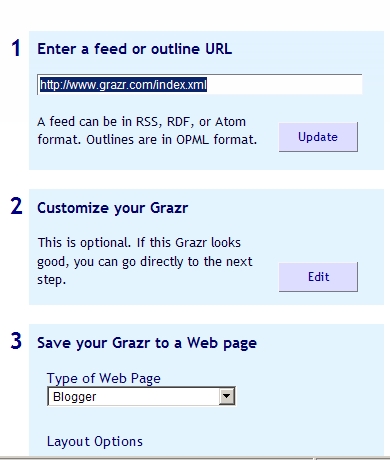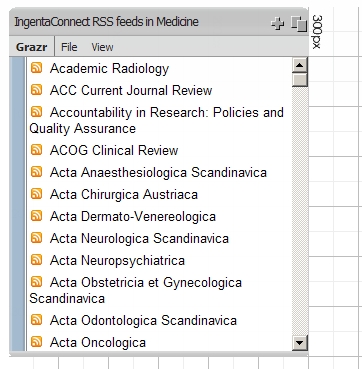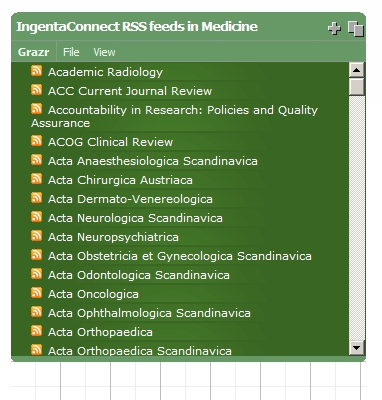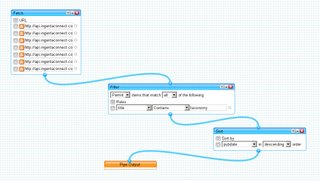Latest issue of our library newsletter is now live
Monday, March 17, 2008
- an update on IngentaConnect's online advertising activities: where you might see ads, what they look like, how we select and control them
- details of the events we'll be attending and speaking at during 2008
- starting soon with Jeff Downing's paper on the value offered by consortial networks in an increasingly competitive library landscape, which he will present at the Electronic Resources & Libraries (ER&L) conference in Atlanta at the end of this month
- a reminder piece about the structure of Ingenta's library services, following significant changes during the last year
- an overview of industry initiatives including KBART, COUNTER, Transfer and MESUR and how these impact our work and that of our customers
- details of the 10 latest publishers to join IngentaConnect:
- Acta Ichthyologica et Piscatoria
- American Association for Laboratory Animal Science
- Essential Oil Resource Consultants SARL
- Hellenic Veterinary Medical Society
- Institut National d’Etudes Démographiques
- Journal of Spatial Science
- The Institute of Marine Engineering, Science and Technology (IMarEST)
- The International Association for Language Learning Technology
- Nordic Board for Wildlife Research
- Oxbow Books
- news of Jeff Downing and Becky Lenzini's appointments (already covered on the blog a few weeks ago)
- special offers from our publisher partners to our library customers.
Labels: "online advertising", counter, erl, eyetoeye, ingentaconnect, kbart, mesur, publishers, RSS, transfer
posted by Charlie Rapple at 2:59 pm
![]()
![]()
Grazr
Thursday, March 08, 2007
Today's example is going to use Grazr a service that amongst its various features, allows you to build a little customized RSS viewer for linking to or embedding in your own applications.
Its pretty easy to do:
Firstly, visit the Grazr Create a Widget page. You'll be prompted with a simple three step process:

As I've just written a posting about OPML exports lets create a widget for exploring the table of contents data for our Medical titles.
This is the URL we need. Size limits on the widget restrict the numbers of titles it'll import in one go, so that link only contains the first 200 titles. Copy and paste that into the box provided in Step 1, and click "Update". After a few seconds your widget should be showing a list of titles.

In Step 2 we choose a colour scheme, fonts, and sizing. I decided to try the the "
sateen_green" theme. Here's how it looks:
Finally, we decide to publish. For the purposes of this article, lets use the little grazr icon:

And we're done. Click on the icon, and you can view the widget for yourself. Selecting a title will pull in the latest list of articles, and you can then click through to read the abstract (or download the full text) on IngentaConnect.
posted by Leigh Dodds at 4:13 pm
![]()
![]()
OPML Exports from IngentaConnect
The feeds are embedded in the subject category pages using an "auto discovery" link similar to that used for RSS feeds, e.g:
<link
rel="index"
type="application/xml"
title="OPML" href="http://api.ingentaconnect.com/content/subject?j_pagesize=-1&format=opml&j_subject=142" />
The URLs could be tidier, but they do the job. I thought I'd publish a list of the feeds here:
- Agriculture/Food Sciences
- Arts and Humanities
- Biology/Life Sciences
- Chemistry
- Computer and Information Sciences
- Earth and Environmental Sciences
- Economics and Business
- Engineering/Technology
- Mathematics and Statistics
- Medicine
- Nursing
- Philosophy/Linguistics
- Physics/Astronomy
- Psychology/Psychiatry
- Social Sciences
Using those links should get you listing of the main IngentaConnect RSS feeds for our electronic collection (i.e. the latest title feed for each journal), grouped by our subject categories. Useful if you're interested in subscribing to a bunch of feeds in one go, or grabbing lists of RSS feeds to create a directory.
Only interested in the feeds for titles that your institution has a subscription to? Then we support that too. At present it relies on IP authentication to identify you and your institution, so its only useful if you're accessing the link from on campus, or via a proxy server, and obviously that your institution has subscriptions activated on IngentaConnect.
To subset the list, add the following parameter to any of the URLs:
&j_availability=subs
Thats it.
Any problems or suggestions for improvements, please let me know.
posted by Leigh Dodds at 2:42 pm
![]()
![]()
Table of Contents by Really Simple Syndication
The project write-up goes into more details and provides links to some sample RSS feeds and a (yet to be populated) Sourceforge project which will be home to some of the code developed during the prototype.
While the experiment was no doubt worthwhile, I think the project is something of a missed opportunity, as it failed to take into account any of the existing work thats been done on enriching publication feeds with detailed metadata.
For example Nature, Ingenta, and other publishers have been producing RSS feeds containing rich metadata for several years now. Collectively we've converged on RSS 1.0 supplemented with Dublin Core and PRISM metadata to carry precisely the information added to the TOCRoSS feeds, only using RSS 2.0 and ONIX. You can compare and contrast examples.
The existing formats have already been successfully used to drive other services, e.g. CiteULike, so there's demonstrable implementation experience that suggests that they meet a number of use cases.
While there's certainly plenty of room for debate about which format(s) and vocabularies are better -- perhaps Atom should replace all of them? -- its a shame that the project didn't focus on drawing out the existing lessons learnt and areas for further work.
Also, had the project adopted existing formats then the code that will ultimately be published would also have been much more useful: it would immediately work with thousands of existing feeds, as opposed to requiring publishers to support another variant format.
posted by Leigh Dodds at 2:00 pm
![]()
![]()
Using Yahoo Pipes with Ingenta RSS feeds.
Thursday, February 15, 2007
Yahoo recently launched a new service called Pipes. It allows users to easily create “mash-ups” of web based content through manipulating RSS feeds.
Amongst many things it can be used to filter and monitor your favourite Ingenta RSS feeds for new articles that might be of interest to you. This article is a step by step guide to creating a simple pipe from a series of ingenta RSS feeds.
- Head on over to pipes.yahoo.com. You will need a yahoo username and password to access the site but if you use yahoo mail or any other yahoo service you can use your existing id. The pipes interface is just about at the cutting edge of web interactive design. Try not to think on it as a web site at all but as a programming environment. Here is a screen shot of my pipe to give you an idea of how it looks.

- The first thing to do is add some RSS feeds to our pipe. Click and drag the FETCH menu item onto the main work area with the blue grid. This asks you to add a url for the RSS feed(s) you want to work with.
- Open a new browser window or tab and go to www.ingentaconnect.com. To find feeds on ingentaconnect you can either browse or search for your favourite journals then click on the “alerting options” menu item under “tools” on the right. This will give you a “RSS feed for latest issue” and “RSS feed for recent issue” link. It is probably best to use the latest issue link as you are looking for new content in the future. Right click on the “RSS feed for latest issue” link and choose the “copy link location” option. (it may be worded differently in some browsers but the principle is the same)
- Go back to your browser with the pipes page and paste the link location into the url box. Pipes automatically checks to see if the url is valid. If you look at the preview area at the bottom of the page you should see a rough representation of the feed.
- Add as many RSS feeds as you like. Try searching for journals you never heard of before on ingentaconnect and adding them. You literally have nothing to lose, the more feeds you add the better your search results will be.
- Now comes the clever bit. Pipes can be combined and filtered in all kinds of ways. Click on the Operators menu item on the left in pipes and then drag the FILTER item that is displayed onto the main area. Then click on the circular icon at the bottom of the fetch section and drag it to the top circle of the filter item. A line links the two together making your pipe.
- In my example I was using journals related to information technology and looking for the word "taxonomy" by clicking on permit items. Pipes fills in the information available in your selected feeds so I chose "title" and "contains" then "taxonomy" in the filters option.
- Next I added a Sort by dragging it from the left hand menu linking it to the bottom of my filter and choosing to sort the pubdate field in descending order to get the newest articles first.
- To finish off building the pipe I linked the bottom of the sort to the top of the pipe output item and checked my debugger area to see my results. You can also get a preview of each stage by clicking on the filter for example to select it and then clicking refresh in the debugger.
Thats the basics. You can see my pipe at http://pipes.yahoo.com/pipes/iBoBIyu92xG0Lrwzl7okhQ. The next step is to add the RSS feed for your pipe to your favourite RSS aggregator so you get regular automatic updates on your favourite ingenta journals
You can mix and match any RSS feeds from any source you like with Pipes. Try mixing Ingenta political science journals feeds with news feeds from the major newspapers or the BBC with pictures courtesy of flickr and geographic information from yahoo maps.
posted by Rob Cornelius at 8:21 pm
![]()
![]()


